Best binoculars 2024: Top picks for stargazing, wildlife, birding and more
We've picked the best binoculars for stargazing, comet viewing and nature watching. November's Black Friday will bring price reductions, so do your research here to prepare.

- Quick list
- Best overall
- Best optical performance
- Best for affordable stargazing
- Best binoculars under $300
- Best budget binoculars
- Best for moon views
- Best mid range model
- Best family binoculars
- Best for magnification
- Best for entry level astronomy
- Best for beginners
- Best for reliability
- Best for daytime use
- Best binoculars FAQ
- How we test
The best binoculars are the perfect companion for anyone who wants to get a closer look at wildlife, sporting events, or concerts. You can even use binoculars for stargazing. Binoculars are typically cheaper and more portable than telescopes, providing a convenient way of observing the sky during nighttime wanderings.
For example, you can use a nice pair of binoculars this month to get a gorgeous view of the bright Supermoon no matter where you are or to zoom in on the rare comet C/2023 A3 (Tsuchinshan-ATLAS), visible in the night sky from October 12 through October 26, before it soars away from Earth for the next 80,000 years. Or, aim your binoculars at the reddish light of Mars when it appears close to the waning moon on Oct. 22 to bring our neighboring planet to life. (For more night sky events, read our monthly skywatching guide.)
Binoculars come in different shapes and sizes, but the best binoculars should be pleasant to use, comfortable to hold in your hands, easy to carry and resistant to various weather conditions. What you hope to use your binoculars for will also impact the type you're looking for: If you primarily want to stargaze, for example, you'll want large objective lenses that will let in as much light as possible.
With the guidance of our expert reviewers, we've rounded up the best binoculars currently on the market to suit a range of purposes and buyer budgets. Whether you want the absolute best or have a limited amount of money to spend, our carefully curated list should have something to suit.
Next month is one of the biggest annual sales events — November 29 to December 2 will see Black Friday and Cyber Monday 2024. Binoculars are often reduced during such events so do keep an eye on models in this guide and on our Black Friday and Cyber Monday deals hub for Space.com's top picks of the best deals.
If you're looking for a highly portable pair, take a look at our guide to the best compact binoculars for small and lightweight models. If your little ones want to get involved, we also have a guide to the best binoculars for kids if you're looking to get your Christmas shopping done and dusted early. Those looking to take their stargazing to the next level may also want to check out our guides to the best telescopes and best beginner telescopes.

A contributing expert to Space.com, Live Science, All About Space and more, Gemma is the author of several books including 'Quantum Physics in Minutes'. She holds a degree in physical sciences, a Master's in astrophysics and a PhD in computational astrophysics and became fellow of the Royal Astronomical Society in 2011. Gemma is also the Communications and Outreach Office at the European Space Agency.
The quick list
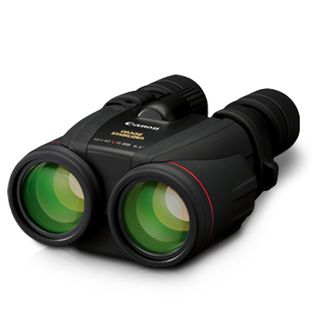
Best binoculars overall
The finest stargazing binoculars money can buy with in-built stabilization. As close to perfection as you’ll get for handheld astronomy.
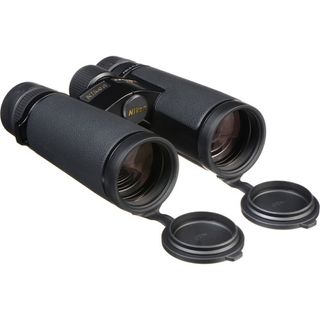
Best optical performance
Some of the best optics on the market in an easily transportable roof prism design. A premium product at a premium price.
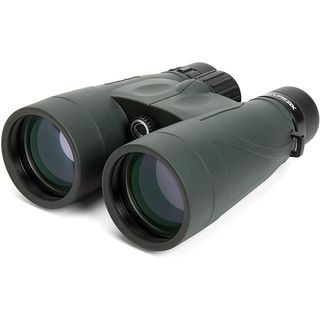
Best for affordable stargazing
They offer bright and clear views, with a wide aperture for gathering light and magnification that is excellent for stargazing and wildlife spotting.
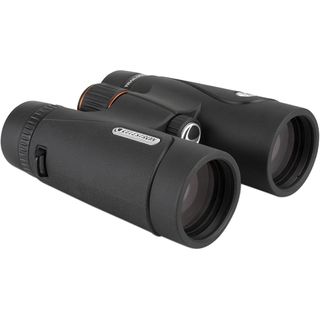
Best binoculars under $300
The TrailSeeker 8x42’s minimalist design makes them a hugely more attractive option than large and heavy deep-sky astronomy-centric binoculars.
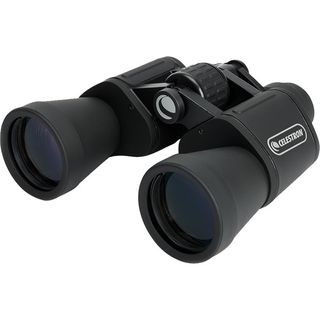
Best budget binoculars
Best thought of as a great value pair of entry-level binoculars for all-round use and for occasional night sky views.
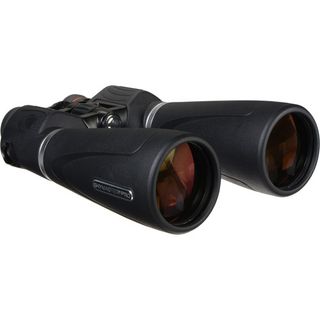
Best for moon views
These binoculars give a superb stargazing experience at a reasonable price. Fantastic magnification for lunar viewing.
Load the next 7 products ↴
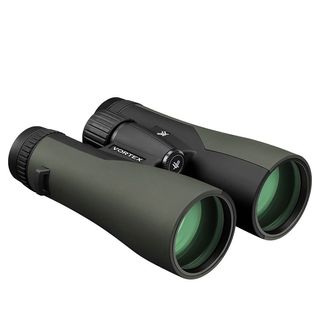
Best mid-range model
The pair you need if a wide field of view and a good sturdy build quality top your brief.
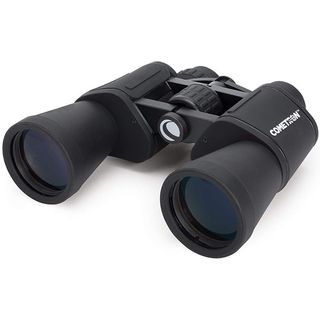
Best family binoculars
Surprisingly good optics make these attractive to adults and kids alike. Considering what and who they're for, for the price, they're hard to beat.
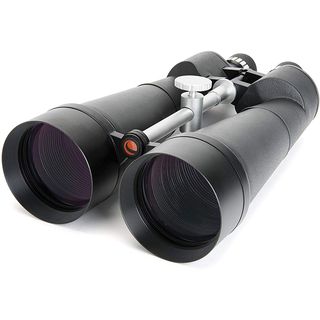
Best for magnification
See the universe close up and in stereo, but don’t plan to hike with them as they're big and heavy.
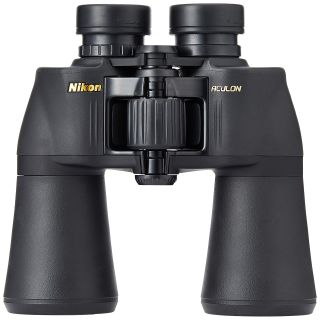
Best for entry-level astronomy
Ideal for anyone just starting out in stargazing. A sleek and well made binocular model with optics to boot.
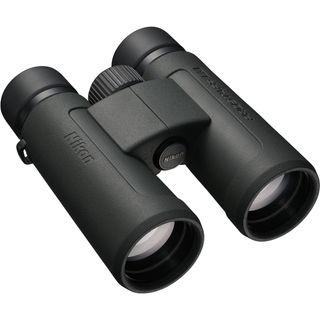
Best for beginners
Slender and lightweight, these are ideal for beginners and hobbyists who need a 'go-anywhere' binocular.
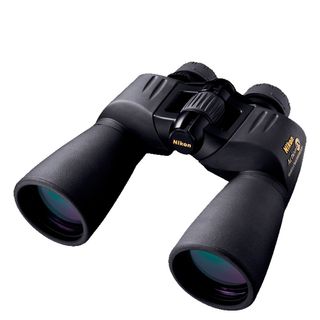
Best for reliability
With high magnification and excellent light-gathering abilities, these binoculars are built to last.
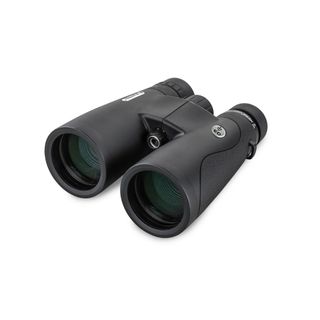
Best for daytime use
These combine the best of both worlds. They're excellent for daytime use but could equally be used for night-time stargazing.
Best binoculars we recommend in 2024
Why you can trust Space.com
Best overall




Canon 10x42L IS WP binoculars
Our expert review:
Specifications
Reasons to buy
Reasons to avoid
✅ You want the best of the best: Other than price and size, we really couldn't find major fault with these binoculars — we gave them 5 stars in our review.
❌ You're a casual user: These are an expensive pair of powerful binos, so if you're a casual sky-watcher or wildlife spotting, they'll be overkill.
❌ You want a lightweight binocular: These are undeniably heavy and bulky, so if weight is important to you, we'd suggest looking elsewhere.
🔎 Canon 10x42L IS WP binoculars: They're not perfect, but they’re as close as you’ll get for hand-held astronomy. They're an outstanding choice for super-steady stargazing thanks to their image stabilization, waterproof design and large objective lenses. ★★★★★
For hand-held astronomy, the Canon 10x42L IS WP binoculars are among the best you can get. Their standout feature is Canon's Optical Image Stabilization (IS). This clever technology uses gyroscope motion sensors to detect arm movements and a vari-angle prism to correct them by up to 0.8 degrees. With the push of a button, you can eliminate the movements caused by your hands shaking and get a steady image. This comes in particularly handy during long viewing sessions when your arms might get tired.
The Canon 10x42L IS WP use premium L-series glass with Canon's multi-layered anti-reflective lens coating (known as 'Super Spectra') to increase light transmission and reduce lens flare. This ensures a bright and clear view with accurate color reproduction. During our Canon 10x42L IS WP binoculars review, we were really impressed with the incredibly sharp image which featured no chromatic aberration, which is just what you need for observing stars.
The main downside to the Canon 10x42L IS WP binoculars is that they are, unfortunately, rather power hungry — but that's the same with any binos with high-tech features. Here, it's the IS system that requires so much power: We got through several AAA batteries in just one sky-watching session, so you'll need to bear that in mind if you're considering purchasing these and make sure you're well stocked-up on batteries every time you venture out. It's extra weight and bulk to carry around with you, and something else to think about when you're packing up your gear. We'd say that overall the Image Stabilization is worth it, though.
We also weren't wholly satisfied with the accessories provided with these binoculars, especially considering the price point. We struggled to get the one-piece lens caps to stay in place, and the carry case was a bit basic and flimsy, so you might want to upgrade it. But overall, these are still the best stargazing binoculars on our list thanks to the astronomy-centric glass and clever image stabilization feature.
- Read our Canon 10x42L IS WP binoculars review
| Attributes | Notes |
|---|---|
| Design | Rugged build quality, but bulky. |
| Performance | Produce bright and colorful images. |
| Functionality | Optical image stabilization. |
Best optical performance





Nikon Monarch HG 10x42
Our expert review:
Specifications
Reasons to buy
Reasons to avoid
✅ You want some of the best on the market: If you're prepared to pay for them, these binoculars have a premium finish and deliver stunning optical performance. They'll last you for years to come.
❌ You specifically want image stabilization: This may be the only thing missing from this pair of binos, so if that's important to you, there previous option in this guide might be better for you.
🔎 Nikon Monarch HG 10x42: A premium package with a premium price, these binoculars are not ideal for beginner users unless you have deep pockets or a real passion for wildlife- or sky-watching that you plan on pursuing for years to come. ★★★★½
Optics don't get much better than those on the Nikon Monarch HG 10x42 binoculars. But it's no surprise, when these binos come from Nikon, a brand synonymous with cameras and high-quality optical equipment. The Monarch HGs use a Field Flattener Lens System, which ensures that images are sharp all the way across the field of view and not just at one specific point. Coupled with their Extra-low Dispersion glass, which practically eliminates chromatic aberration, these binoculars are very hard to beat indeed.
During our Nikon Monarch HG 10x42 review we tested these binoculars in a range of challenging conditions and were pleased with the results every single time. Light transmission is good because the 42mm objective lenses are large enough to allow light to pass through even in twilight hours. Every single glass element also contains multilayer coatings to help improve the transmission of light, which Nikon reported as being 92% or higher.
Whilst they're undeniably pricey binoculars, we feel you're getting real quality for your money with this pair. Everything about them feels premium. The magnesium alloy body is slim and lightweight enough to slip into a coat pocket, but they feel balanced in the hand and come coated in a grippy rubberized armor. They're also entirely waterproof, so you don't need to worry about getting caught out in bad weather, and they're nitrogen-filled to prevent fogging as well.
Even the accessories feel high-quality. These binoculars come with a cushioned neck strap, objective lens caps and a premium carry case that has a secure safety catch to prevent them from falling out during transit (no relying on velcro here). We also enjoyed other unexpected details like the locking mechanism on the diopter adjustment ring which means it can't get accidentally knocked out of place. The only thing they lack is image stabilization technology.
| Attributes | Notes |
|---|---|
| Design | Premium finish all over. |
| Performance | Razor sharp views from edge to edge. |
| Functionality | Only way to improve would be inclusion of image stabilization. |
Best for affordable stargazing





Celestron Nature DX 12x56
Our expert review:
Specifications
Reasons to buy
Reasons to avoid
✅ You want to take them anywhere in any weather: They were created with the outdoor enthusiast in mind, and they're waterproof and fogproof so you can use them anywhere.
❌ You want to use them for prolonged periods: They may become quite heavy if you plan on using them for long periods.
🔎 Celestron Nature DX 12x56: They offer bright and clear views, with a wide aperture for gathering light and excellent magnification for stargazing and wildlife spotting. ★★★★½
The Celestron Nature DX 12x56 binoculars are a great deal for under $250, perfect for casual wildlife spotting, bird watching or stargazing. The build quality is fantastic: They have a full rubber housing and they're completely waterproof, fogproof and nitrogen-purged. The Nature DX 12x56 binoculars include a tripod mount that could be useful for longer viewing sessions and a rain guard that protects the lenses from getting watermarked.
The focus knobs turn smoothly and easily. During our Celestron Nature DX 12x56 review, we appreciated that the binoculars can focus on objects less than 10 feet away, making them great for spotting wildlife in your backyard. If you wear glasses, you'll appreciate the 16mm eye relief provided by the twist-up eyecups.
Despite coming in at under $250, we think the optics on the Celestron Nature DX 12x56 binoculars are comparable to some more expensive models. That's because they have multi-coated optics and BaK-4 prisms, which are generally regarded as being the best. The Nature DX are only let down by their lack of sharpness, which may be disappointing for more advanced or professional users, but if you're a casual user we think these binos are amongst the best you can buy.
If you want a high-quality pair of binoculars for bird watching or wildlife watching and can forgo some level of sharpness that more expensive models can provide, these are attractive. They are also suitable for sky watching and, thanks to the rubber armoring, are hardy enough to be taken anywhere without worrying about the elements.
- Read our Celestron Nature DX 12x56 review
| Attributes | Notes |
|---|---|
| Design | Fogproof and waterproof. |
| Performance | Bright images even when observing in low light. |
| Functionality | A little heavy for prolonged use. |
Best binoculars under $300





Celestron TrailSeeker 8x42 binocular
Our expert review:
Specifications
Reasons to buy
Reasons to avoid
✅ You want to travel with them: We found these binos were lightweight enough to travel with them easily, although perhaps not the best for prolonged periods of handheld use.
❌ You're serious about astro: These binos lack the magnification needed for dedicated astro use, particularly for observing deep sky objects.
🔎 Celestron TrailSeeker 8x42 binoculars: Traveling stargazers will love them as they work well after dark and strike a balance between quality, affordability and portability. The TrailSeeker 8x42’s minimalist design makes them a more attractive option than large and heavy deep-sky astronomy-centric binoculars ★★★★½
We think the Celestron TrailSeeker 8x42 binoculars make a great pair for amateur astronomy, whilst also having the flexibility to be used for a range of other pursuits. Their price point sits just above the more affordable mass-market binoculars, and this means that you get high-quality BaK-4 glass and multi-coated optics, as well as waterproofing and nitrogen purging to make these binoculars safe to use in any weather conditions.
In our Celestron TrailSeeker 8x42 binoculars review we were very pleased with the build quality on these binoculars. They're constructed from a lightweight magnesium frame with rubber coating for grip and protection. They also come with a useful range of accessories, including a thick and comfortable neck strap, a padded carry case and an innovative harness strap that spreads the weight of the binoculars over your shoulders for longer viewing sessions.
If you're looking for good binoculars for stargazing, the Celestron TrailSeeker binoculars — despite coming from Celestron — might not be the best choice on the market thanks to their 8x magnification and 42mm lens diameter. Ultimately, they're at the lowest useful end, so while they're not completely useless, you won't be able to enjoy any views of deep space. We have found them capable of offering adequate views of star clusters and the Milky Way, however, thanks to their wide viewing angle.
It's also worth noting that the TrailSeeker 8x42 binoculars don't have Extra-low Dispersion (ED) glass, so we experienced a fair bit of color fringing, particularly when viewing bright objects such as the moon. It's not a surprise at this price point, however — and Celestron do have a model with ED glass, but as you'd expect it's notably more expensive.
Their specifications make them an entry-level choice in some ways; you wouldn’t want to go any lower than their 8x magnification and 42mm objective lens size. Although the TrailSeeker 8x42 are good all-rounders, 10x50 binoculars remain the sweet spot for stargazing.
Glasses-wearers will also find this pair easy to use thanks to their generous 17mm eye relief, which can be set in three different positions depending on your preference.
| Attributes | Notes |
|---|---|
| Design | Fogproof and waterproof. |
| Performance | Good quality optics, slight color fringing. |
| Functionality | Wide field of view. |
Best budget binoculars





Celestron UpClose G2 10x50 Binocular
Our expert review:
Specifications
Reasons to buy
Reasons to avoid
✅ You're a beginner: If you've used binoculars before, then these are unlikely to impress you, but they're perfectly suited to beginners.
❌ You specialize in astro: While they do give decent views of the night sky, anyone focusing solely on astronomy would likely want to go for a more powerful pair.
🔎 Celestron UpClose G2 10x50 Binocular: A great value pair of binoculars, well suited for entry-level and all-round use. They're also great for occasional night sky use and are easy to set up, use and adjust. If you're an astronomer on a budget, these are a decent choice, although we do question their longevity. ★★★★½
These are affordable skywatching binoculars that would be ideal for anyone just starting out who wants to get the most for their money.
In our Celestron UpClose G2 10x50 binocular review, we found the moon looks amazing through these binoculars, easily fitting into the view with just a hint of false color. In July 2020, the UpClose G2 10x50 binoculars were very effective in spotting the naked-eye comet C/2020 F3 (NEOWISE). We managed to spot three stars within the Trapezium Cluster near the center of the Orion Nebula (Messier 42), but you'd need a pair with higher magnification if you want to see the fourth bright star in this star-forming area.
If you're on a budget, then, the UpClose G2 10x50 binoculars are a fantastic choice, particularly if you're just starting out on a stargazing hobby. They're light enough to carry around and if you're out trekking, they're ideal to throw in a backpack without adding too much extra bulk.
They're not all perfect, though; of course some corners have been cut considering the price. We've discussed the pitfalls in more detail in our review, but you'll need to adjust the alignment of the lenses (collimation) for one.
They aren't waterproof, either, and they haven't been nitrogen-purged, so we wouldn't recommend using them in inclement weather. While the rubber armor and aluminum housing is labeled as water-resistant, we certainly wouldn't like to push our luck with them. They're liable to fog up in the cold — although they were fine during a two-hour session in near-freezing conditions.
| Attributes | Notes |
|---|---|
| Design | Basic build design and quality. |
| Performance | Surprisingly little chromatic aberration. |
| Functionality | Needs greater magnification for astro. |
Best for moon views





Celestron SkyMaster Pro 15x70 Binocular
Our expert review:
Specifications
Reasons to buy
Reasons to avoid
✅ You want good quality without breaking the bank: Given the high magnification, sturdy build and large objectives, we think these offer a lot for the price.
❌ You want to view planets or small distant galaxies: They don't excel in this area, they're more suited to providing dramatic wide-field views or larger objects.
🔎 Celestron SkyMaster Pro 15x70 Binoculars: These offer a top stargazing experience for a reasonable price. They won’t give you close-ups of planets or reveal the most distant galaxies, but they make up for it by providing dramatic wide-field views in a good, dark sky. ★★★★½
Celestron is a well-respected brand with a strong reputation and the SkyMaster binoculars, including the 15x70 'giant' model, deliver excellent views at an affordable price. Despite being a bit on the heavy side, these binoculars are durable and we think they offer impressive quality for their cost.
The SkyMaster 15x70 binoculars' number one advantage is how much light they can gather. The 70mm objective lenses pull in a huge amount of light and, coupled with the 15x magnification, they're perfect for gazing at the stars with. Objects in the night sky are much clearer than they are with less powerful binoculars, although it's worth noting that there's some blurring around the edges of the lens — a common trait of cheaper models.
They're a great choice if you wear glasses too, since the Celestron SkyMaster 15x70 binoculars have an impressive 0.7 inches (18mm) of eye relief, so you should be able to use them comfortably.
Optically the star images were excellent at the center of the field of view, but the distortion was evident towards the edges, with the stars appearing as streaks. This is not very disturbing, as one’s vision is only sharp at the center anyway, but it means that you would have to move the binoculars to explore a large starfield. To get edge-to-edge sharpness in binoculars of this size you will have to pay a great deal more.
At 11 inches (280mm) in length and weighing 3 lbs (1.36kg), we found in our Celestron SkyMaster Pro 15x70 binocular review that they certainly have a lot of heft. Using them handheld isn't impossible, but for maximum comfort, it's best to use a tripod with these binoculars. Their powerful magnification makes views of the moon truly stunning, and we were especially impressed by how the lunar surface looked three-dimensional.
Despite the larger 70mm objective aperture, the higher magnification of 15x reduces the apparent field of view to 4.4 degrees, compared to typical 10x50s or 12x50s that provide a degree more.
| Attributes | Notes |
|---|---|
| Design | Robust construction. |
| Performance | Optics give good detail. |
| Functionality | Excellent for viewing larger deep-sky objects. |
Best mid range model



Vortex 10x50 Crossfire HD Binocular
Our expert review:
Specifications
Reasons to buy
Reasons to avoid
✅ You want to travel with them: These binoculars' lightweight design makes them extremely manageable to travel with.
❌ You're on a tight budget: While they're not the most expensive option on this list, anyone on a tight budget could certainly find a more affordable pair.
🔎 Vortex 10x50 Crossfire HD Binocular: If you want to move up to the next level with your binocular stargazing, then the roof prisms on these binoculars bring super-sharp views and come with a useful harness and an excellent padded case. ★★★★
The Vortex 10x50 Crossfire HD binoculars have a lot going for them. We think they're reliable and sturdy, and useful whether you're watching wildlife or doing the occasional bit of astronomy. Their design is outstanding, particularly thanks to the focusing knob that's easy to adjust even if you're wearing very thick gloves.
The eyecups, too, are a standout feature, thanks to being customizable and twistable. The eye relief goes to 17mm, which we think is very generous and useful if you wear glasses. The Crossfire HD binoculars are lightweight, too: they weigh only 1.89lbs (0.86kg) so you'll barely notice them in a backpack or in your luggage while you're traveling.
The Vortex 10x50 Crossfire HD are roof prism binoculars, which means a relatively compact and space-saving design of two tubes joined by a small hinge in the center that houses the optics and the focusing knob. The lens caps on the 50mm objective lenses are tethered to the hinge.
The Vortex Crossfire HD 10x50 binoculars provide a sharp and clear view, particularly if you're into astronomy; they make stars look like perfect pinpoints of light. You might notice some color distortion when looking at brighter objects, but this is common for binoculars in this price range. However, they offer a great balance of brightness and sharpness across the entire field of view. During our Vortex 10x50 Crossfire HD review, we only observed a tiny drop-off towards the very edges of the field of view.
There are a few downsides to them, of course. Although these binoculars come with a harness, we realized during our testing that the padded case forms part of the harness so you can't use one without the other, which is a little frustrating.
| Attributes | Notes |
|---|---|
| Design | Sturdy, well constructed build. |
| Performance | Bright and sharp images. |
| Functionality | Excellent padded case and harness. |
Best family binoculars





Celestron Cometron 7x50
Our expert review:
Specifications
Reasons to buy
Reasons to avoid
✅ You're buying for your kids: These make a great inexpensive, 'don't care if they get trashed' pair of binoculars that are great for kids who aren't particularly careful.
❌ You want good quality: They're decent for what they are, but if you want good quality optics we'd recommend spending a bit more on a better pair.
🔎 Celestron Cometron 7x50: Their small size and light weight (1 lb 11 oz) let you use them all day, yet you can still hand-hold them comfortably after sunset and long into your dark night of sky-watching. Considering what and who they're for, for the price, they're hard to beat. ★★★★
It is a known fact that children have better night vision than adults, meaning they do not require high-end binoculars to see the same amount of light that an adult would with a more powerful pair. As such, the 7x magnification and 50mm objective lenses make the Celestron Cometron 7x50 a great choice for kids (they're featured in our best binoculars for kids guide).
Having reviewed the specs on paper, we weren't too excited about reviewing this pair of binoculars, but to our pleasant surprise, we ended up loving them in our Celestron Cometron 7x50 review. We think they offer a budget-friendly entry into the realm of sky-watching, and if they don't suit you, the gamble will only set you back $40.
The Celestron Cometron 7x50 are lightweight and easy to carry around, even in the small hands of a child. They are, however, not so lightweight that they will break easy: they're hard-wearing enough that they can withstand the odd bash or knock. It's worth noting, though, that they aren't waterproof, so we wouldn't recommend using them in bad weather (and they certainly wouldn't survive being dropped in a puddle).
Keep in mind that kids might find it more challenging to keep binoculars steady for a long time, so it's a good idea to pick a pair that are lightweight and comfortable for them. This makes it easier for kids to use them and helps prevent them from getting tired quickly. Alternatively, consider mounting them on a tripod.
- Read our Celestron Cometron 7x50 review
| Attributes | Notes |
|---|---|
| Design | Water-resistant, not waterproof. |
| Performance | Useful for other subjects in the daytime. |
| Functionality | Ideal for use by adults and kids alike. |
Best for magnification




Celestron SkyMaster 25x100 Binocular
Our expert review:
Specifications
Reasons to buy
Reasons to avoid
✅ You want more detailed views: The high magnification means you can pick out some incredible details in the vast night sky.
❌ You want to use them handheld: They're big and heavy, so using them handheld would end in arm-ache and you'd have a hard job holding them steady.
🔎 Celestron SkyMaster 25x100 Binocular: These heavy-hitters are certainly not for uninitiated. We think these are more akin to two 100mm refractor telescopes stuck together as they have an enormous reach. They're our favorite large astronomy binoculars, and with proper care, they could give you decades of joyful stereoscopic star-hopping. ★★★★
The Celestron SkyMaster 25x100 are our top pick for large astronomy binoculars. They act like two 100mm (4-inch) refractor telescopes set up side-by-side, with built-in image-erecting prisms and eyepieces that rotate independently through 450 degrees rather than the combined central focus knob that you get on traditional binoculars. They also have a 15mm eye relief, which is just enough to comfortably use them with glasses.
During our Celestron SkyMaster 25x100 review, we were impressed with the breathtaking images of the night sky they provided. We were able to pick out clusters of galaxies like the Leo Triplets, Jupiter's atmospheric belts and the Sagittarius star cloud (also known as Messier 24). The multi-coated optics produce bright, clear views through the unusually large objective lens diameters.
It goes without saying that the Celestron SkyMaster 25x100 binoculars are very heavy and large. You won't be able to use them handheld, so they will need to be mounted to a tripod using the built-in tripod adapter. They're rather heavy, too, weighing in at 8.75lbs (3.97kg) which doesn't make them all that suitable for carrying around (particularly considering you'll also need to carry a tripod).
But the size is, of course, for a reason, because without binoculars this large you can't get such breathtaking views of the night sky. The only real let-downs are the disappointing lens covers and the thin carry case, but aside from those, we think these binoculars are amongst the best for astronomy.
- Read our full Celestron SkyMaster 25x100 review
| Attributes | Notes |
|---|---|
| Design | Requires tripod to use. |
| Performance | Perfect for finding clusters of galaxies. |
| Functionality | 450 degree independent eyepiece rotation. |
Best for entry level astronomy




Nikon 10x50 Aculon A211 Binocular
Our expert review:
Specifications
Reasons to buy
Reasons to avoid
✅ You're looking for your 'first pair' of binoculars: We think they're a great option for anyone starting out in their astronomy journey.
❌ You wear glasses: The eye relief is only 0.46-inch/11.8mm, so they aren't great if you wear glasses.
❌ You need them for travel: We found them a little bulky, so they might not be the best pair to travel with.
🔎 Nikon 10x50 Aculon A211 Binoculars: Ideal for anyone just starting out in stargazing. They're a bit bulky for travel and they don't offer much eye relief, but they're bright and sharp enough for impressive entry-level astronomy. ★★★★
The Nikon 10x50 Aculon A211 are our top pick for entry-level astronomy. Their 10x magnification and 50mm objective lenses are ideal for stargazing, though they could also be used for observing birds or other wildlife when you're out and about.
For the price, we think the optics on these are fantastic. They utilize a porro prism design, which makes them a bit bulkier than some other options, but really maximizes the brightness of the image for stargazing. They also incorporate high-density BaK-4 glass, which is much better than the BK-7 glass that you'll more commonly find at this price point. This makes them a great-value choice for those looking to get started with astronomy.
We really enjoyed scanning the skies with these during our Nikon 10x50 Aculon A211 binoculars review. Stars appeared extremely sharp in the center of the field of view, with just some blurring towards the outer edges and a little chromatic aberration when viewing the moon. This is to be expected at this price point, but we don't think it would hinder the enjoyment of first-time stargazers.
If you're considering buying the Nikon 10x50 Aculon A211 binoculars, there are a couple things worth keeping in mind. First, their close focus distance is a minimum of 23 feet (7 meters), which means if you want to observe wildlife at close range, perhaps in your own backyard, they're perhaps not the best choice. They also have a fairly small eye relief at 11.8mm, which isn't great if you wear glasses.
- Read our full Nikon 10x50 Aculon A211 binoculars review
| Attributes | Notes |
|---|---|
| Design | BaK-4 glass optics. |
| Performance | Bright and sharp images, some chromatic aberration. |
| Functionality | They lack eye relief. |
Best for beginners





Nikon PROSTAFF P3 8x42
Our expert review:
Specifications
Reasons to buy
Reasons to avoid
✅ You want quality on a budget: Nikon hasn't cut any corners here, and the optics are excellent for the low price point.
❌ You primarily use them for stargazing: While we did find they performed well for stargazing, they're not astro-specialists, so if that's your niche there are better options out there.
🔎 Nikon PROSTAFF P3 8x42: Slender and lightweight, these are ideal for beginners and hobbyists who need a 'go-anywhere' binocular, or for those who want a lighter binocular around their neck. ★★★★
If you're looking for a fantastic pair of entry level binoculars, look no further than the Nikon Prostaff P3 8x42. We think they are of a much higher quality than their modest price tag would imply, and they're a great buy for any beginner or casual user.
The Prostaff P3 8x42 are fairly new to the market and they really stand out from the crowd due to their excellent optics — they really are a cut above the competition. Another stand-out feature is their impressive eye relief: at 20.2mm it's one of the largest on this list, making them perfect for anyone who wears glasses (or needs adjustable eyecups for comfort).
These binoculars are designed to be lightweight and durable. Made from strong fiberglass-reinforced polycarbonate resin, they have a non-slip rubber coating for a comfortable grip during long use. The shockproof design makes them resistant to damage from any accidental drops or bumps, and they are also waterproof and fog-proof, which is impressive for their affordable price.
During our Nikon Prostaff P3 8x42 binocular review, we found adjusting the focus on very easy, and we love that they offer just the right amount of resistance, even when you're wearing thick gloves. Although they don't include a tripod adaptor, their 8x magnification and lightweight design (only 572g) make them manageable without one.
The Nikon Prostaff P3 8x42 are great for casual nature watching or travel, without stressing about exceeding your luggage weight limit. However, if you plan on long nights of extended stargazing, they might not be the most suitable choice.
| Attributes | Notes |
|---|---|
| Design | Waterproof and fogproof. |
| Performance | Sharp and bright views. |
| Functionality | Solid polycarbonate fiberglass-reinforced body. |
Best for reliability




Nikon Action EX 12x50 Binocular
Our expert review:
Specifications
Reasons to buy
Reasons to avoid
✅ You want a long-term pair: If you're looking for a reliable pair of binoculars with high magnification that will last you for years to come, these are a great choice.
❌ You want something lightweight: They're quite heavy and require a tripod in order to hold them steady, so they're not ideal for prolonged handheld use.
🔎 Nikon Action EX 12x50 Binoculars: A step-up from mass market models with a little extra magnification, excellent light-gathering and rugged construction including waterproofing, comfy rubber grips and a large focus knob. ★★★★
The Nikon Action EX 12x50 binoculars are a fantastic option compared to more mainstream 10x50 binoculars as they provide a higher 12x magnification while maintaining the same 50mm aperture. The build is excellent, featuring comfortable rubber grips and a large focus knob, although the 13mm eye relief will be a little short for anyone who wears glasses.
You'll generally find that when using higher magnification binoculars, you'll get slightly duller images. That's because you're magnifying the same amount of collected light. But with the Nikon Action EX 12x50 binoculars, that's not really the case: Thanks to their multi-coated lenses and high-refractive-index prisms, their images remain beautifully bright, which is a serious plus for anyone considering binoculars with a more powerful magnification.
The Nikon Action EX 12x50, weighing in at 2.3 lbs (1.04kg), is too heavy for long bouts of stargazing, and the higher magnification will enhance any image wobble, so we advise using a tripod.
In our Nikon Action EX 12x50 binoculars review, we found that these binoculars give clear and sharp images in the center, especially when looking at stars. However, you might see some distortion near the edges of the 5.5-degree field of view. Seeing Saturn's rings individually wasn't possible with this pair of binoculars, but observers can still notice clear ansae – the extensions of the rings on either side of the planet, creating an oblate shape. Overall, they offer a great viewing experience.
| Attributes | Notes |
|---|---|
| Design | Tough waterproof rubber armor. |
| Performance | Excellent light gathering & sharp optics. |
| Functionality | Quite heavy. |
Best for daytime use





Celestron Nature DX ED 12x50 Binocular
Our expert review:
Specifications
Reasons to buy
Reasons to avoid
✅ You want versatile binoculars: We found these binoculars great for daytime use and nighttime stargazing, giving you the best of both worlds.
❌ You wear glasses: There's only 0.-56-inch/14.3mm of eye-relief, so they're not ideal if you wear glasses.
🔎 Celestron Nature DX ED 12x50 Binoculars: One of the best binoculars for stargazing, wildlife observations and more. The key to their flexibility is their use of high-end extra-low dispersion (ED) objective lenses to create sharp, bright, and aberration-free images within a compact and portable design. ★★★★
These are some of the finest handheld binoculars for stargazing and wildlife observation. The Extra-low Dispersion (ED) objective lenses produce aberration-free sharp images.
During our Celestron Nature DX ED 12x50 review, we took them to several events, which made us appreciate how lightweight and compact they are to carry in their padded case. We tested them at a motor race and were delighted with the bright and sharp views, even at dusk.
We were equally happy with how well these binoculars worked at night. The Pleiades star cluster looked sharp and clear across the entire view, with only a slight decrease in quality towards the edges, and we didn't see any noticeable color distortion either.
This is an excellent pair of binoculars that boasts great quality for a relatively low price. You can typically pick them up for under $250, which is more expensive than some pairs on this list, but they're well worth the price. We particularly love the tough rubber armor on the outer casing of the binoculars, protecting them from water damage and the odd impact.
However, we've been let down by the quality of the Celestron Nature DX ED 12x50's eyecups. They're not very comfortable to use, and in particular if you wear glasses you'll likely find them a problem. It's not serious enough to ruin the binoculars entirely but it's something to keep in mind.
| Attributes | Notes |
|---|---|
| Design | Extra-Low Dispersion (ED) glass. |
| Performance | Excellent optics. |
| Functionality | Lack of eye relief. |
Best binoculars FAQ
Which binoculars are best?
The answer to this question depends on your needs, abilities and budget. Binoculars come in two kinds: Porro-prism and Roof-prism. The Porro-prism kind have the most common look of any binocular. They feature a gradual and stepped-up appearance, forming part of the housing which includes two exit pupils, eyecups, central focuser, objective lenses and optical system. You’ll find them best for observing due to their affordability.
Meanwhile, the Roof-prism binocular boasts a “H”-shaped appearance that lends well to a smaller, and lighter-weight design. These instruments have complicated optical designs, which means that observers need to spend a substantial amount of money to own a reliable binocular of this type. As such, a good Roof-prism binocular isn’t ideal for those on a budget, or casual observers.
What do binocular numbers mean?
Examine any binoculars and you’ll discover that one of several combinations of numbers separated by a 'x' will be visible — for example, 7x40, 10x50, 8x40 and so on. These numbers, which are often located close to the eyepieces, tell you the magnification and aperture of the optical system. For example a 10x50 binocular has a magnification, or 'power' of 10x and front lenses with a diameter of 50mm. These numbers determine which objects you can observe by telling you how much you can magnify them by and how much light your binoculars can collect.
The larger the aperture, the easier it will be to see fainter night sky targets such as galaxies and nebulae. As a rule of thumb, and under decent observing conditions, 7x35 binoculars will reveal a hundred thousand stars while 10x50s will show the finer details of the Moon, planets, the Andromeda Galaxy (Messier 31) and the Orion Nebula. Larger, heavier binoculars such as 20x80s and 20x100s open up a wealth of objects such as the fainter spiral galaxies Messier 65 and NGC 3628 and a selection of globular clusters and star-forming regions.
Some models of binocular have their field of view printed on the barrels or somewhere close to the magnification and aperture. Given in degrees, this number tells you how wide you can see when peering through the eyepieces. The larger the number, the wider the scene. Ten degrees will allow the Big Dipper’s bowl to comfortably fit within your field of view.
Which is best BaK-4, BK-7 or K9 binoculars?
As you shop around for your next piece of observing kit, you’ll come across the terms BaK-4, BK-7 and K9. These refer to the formulations of glass found in the prisms of spotting scopes, binoculars and monoculars.
BK-7 and K9 glass refer to borosilicate formulations and can be found in cheaper products. While they're used across a wide range of brands, this glass is said to lead to problematic exit pupils; the field of view in particular isn’t perfectly round, which can leave the observer with poor clarity around the edges of their chosen target. We must stress that this isn’t true of all pieces of kit, so we advise giving your chosen binoculars a test before committing to them.
While it's a touch more expensive than BK-7 and K9, the BaK-4 — or barium crown glass — is preferable for binoculars. With this type of prism you’ll achieve a higher quality of image, particularly when combined with a well-made optical system.
Multi-coated vs fully-coated binoculars
Without coatings on the optics of binoculars, images would be blurry and lack contrast since light transmission would be poor, glare would become prevalent and light would be lost through internal reflections. The observer would be left with a disappointing view.
It’s easy to find out if your binocular lenses feature a coating: you’ll see a darker appearance when you peer through the barrels, while the glass will feature a bluish or greenish tint thanks to a layer of magnesium fluoride. If you see a brownish tint, then your optics are coated with calcium fluoride. Both offer the same outcome — they halt the reflection of some wavelengths, allowing more light to enter your eyes through the exit pupils.
Binoculars largely come in two varieties when it comes to coatings: they’re either fully coated or multi-coated. In both versions, all lenses, glass surfaces and prisms feature at least one layer of magnesium fluoride or calcium fluoride. Binoculars with multi-coated optics are the most superior kind you’ll be able to find on the market, with at least one of the surfaces featuring several layers of anti-reflective compounds.
Which binoculars are best for astronomy?
For a decent observing experience in the dark, the best binoculars for stargazing must have an optical system that is able to collect as much light as possible to pick out those faint targets. In other words, the larger the aperture, the better. This does mean that they tend to be bulkier and more expensive than models used for other disciplines, though.
We advise purchasing at least 10x50 binoculars for comfortable views of a selection of targets; they’re light enough to hold for long periods of time, while offering good views of a selection of night-sky targets. The larger the binocular, the more you’ll be able to see, but be warned: They’ll also be heavier and will require a tripod for steady sights of the heavens.
It isn’t just the aperture that you need to be mindful of. The quality of the optical system is an essential feature to consider for high-definition, excellent contrast and crystal-clear views. You’ll discover two major kinds of binoculars at reputable stockists: the porro-prism and roof-prism. Choose the Porro-prism design for a reliable and affordable piece of kit, making sure that the lenses feature a coating and the glass is of decent quality (we can vouch for multi-coated optics and BaK-4 prisms). If you wear spectacles, we advise choosing binoculars that offer eye relief of at least 14 to 15mm.
Whichever model you decide to go for, there are plenty on the market to suit a variety of budgets, observing interests and abilities.
How we test the best binoculars
To guarantee you're getting honest, up-to-date recommendations on the best binoculars to buy here at Space.com we make sure to put every binocular through a rigorous review to fully test each instrument. Each binocular is reviewed based on many aspects, from its construction and design, to how well it functions as an optical instrument and its performance in the field.
Either our expert staff or knowledgeable freelance contributors test each pair of binoculars carefully, to ensure a personal, fair and hands-on review of each model and judge it based on price, destined use and class.
For example, comparing a pair of 25x100 mammoth binoculars to a compact pair of 8x25s wouldn’t be appropriate though each binocular might be the best pick in their own class.
We look at how easy they are to operate, whether eye relief can be adjusted for spectacles wearers, if a binocular comes with appropriate accessories or carry bags and suggest if a particular set of binos would benefit from any additional kit to give you the best viewing experience possible.
With complete editorial independence Space.com are here to ensure you get the best buying advice on binoculars, whether you should purchase an instrument or not, making our buying guides and reviews reliable and transparent.
Join our Space Forums to keep talking space on the latest missions, night sky and more! And if you have a news tip, correction or comment, let us know at: community@space.com.
Get the Space.com Newsletter
Breaking space news, the latest updates on rocket launches, skywatching events and more!

Jase Parnell-Brookes is the Managing Editor for e-commerce for Space and Live Science. Previously the Channel Editor for Cameras and Skywatching at Space, Jase has been an editor and contributing expert across a wide range of publications since 2010. Based in the UK, they are also an award-winning photographer and educator winning the Gold Prize award in the Nikon Photo Contest 2018/19 and named Digital Photographer of the Year in 2014. After completing their Masters degree in 2011 and qualifying as a teacher in 2012, Jase has spent the last two decades studying and working in photography and publishing in multiple areas, and specializes in low light optics and camera systems.
- Gemma LavenderContributing expert
- Kimberley LaneContributing writer
- Tantse WalterContributing Writer